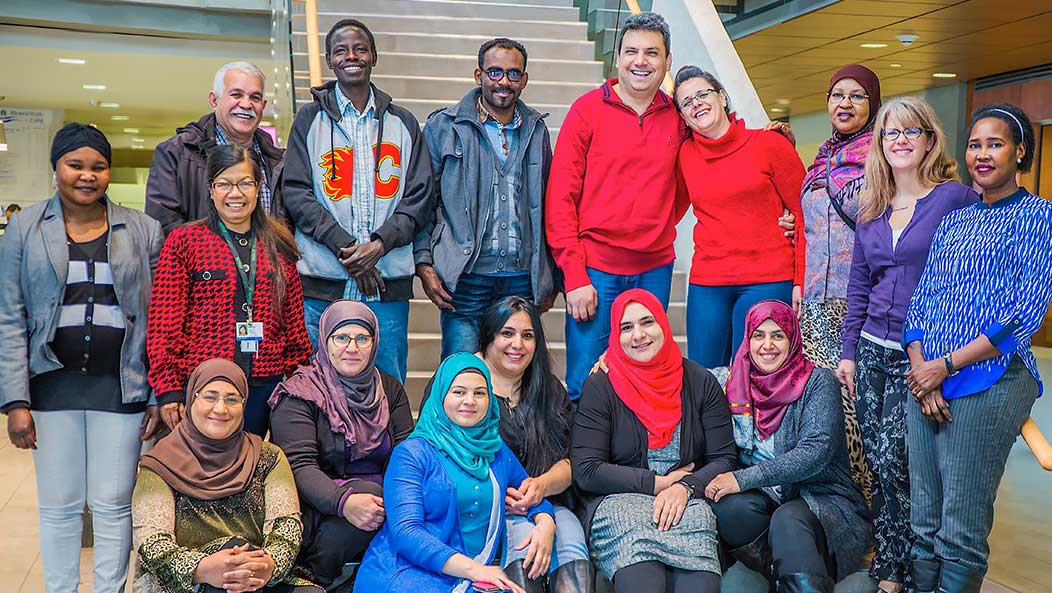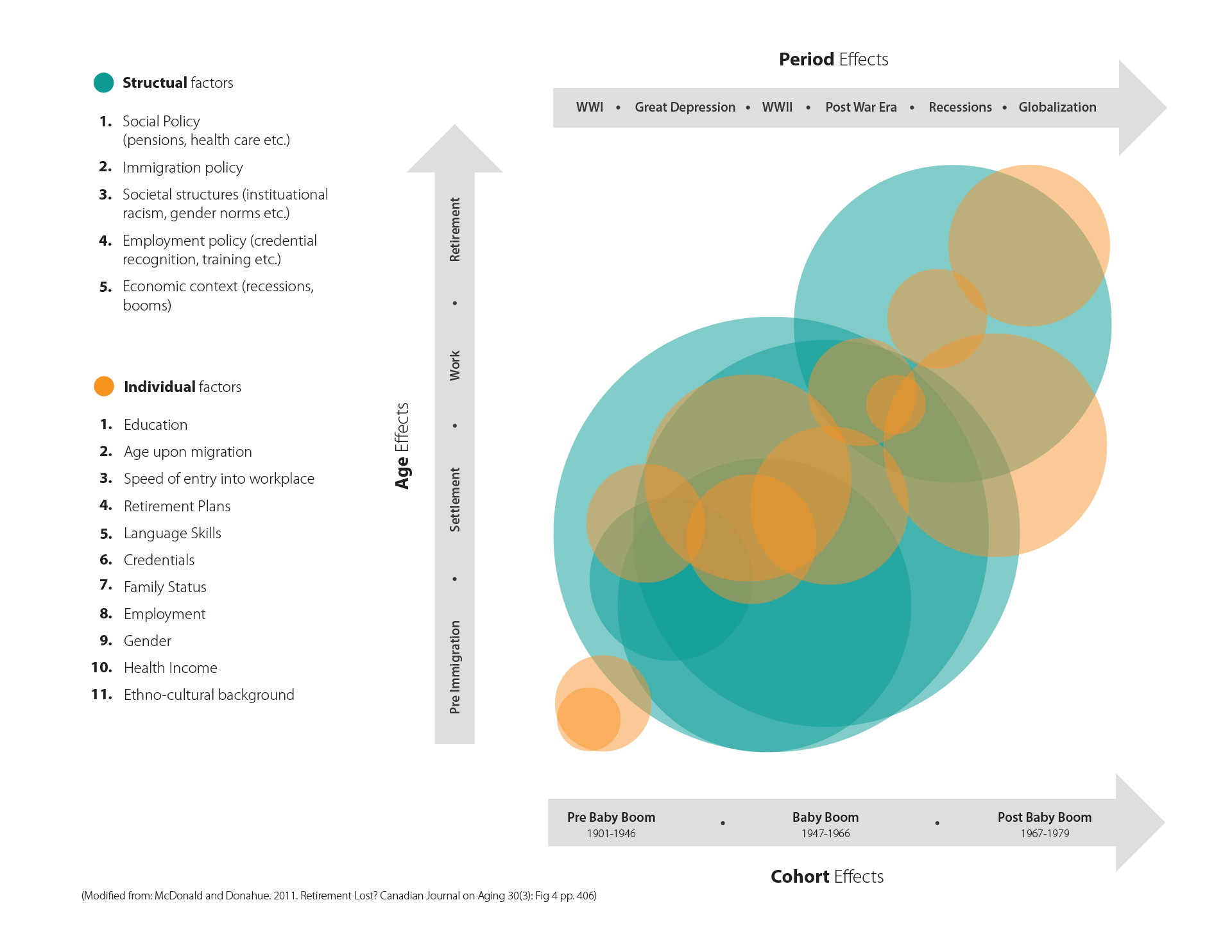Life Course
Just as immigrant women retirees cannot be analyzed as an isolated category, retirement as a concept or life phase cannot be studied in isolation from the rest of an individual’s life experience.
It is the accumulation of many structural and individual factors over time (Bulanda and Zhang 2009, Denton and Spenser 2009, McDonald and Donahue 2011).
The intersecting factors affecting immigrant women retirees’ lives can be nested within a life-course approach to retirement in order to gain a holistic picture of the complex factors shaping women’s lives as they age. Using existing life course models and scaffolding individual identity and structural factors onto it can be visualized in the following way:




